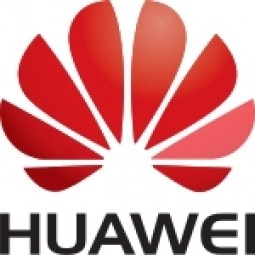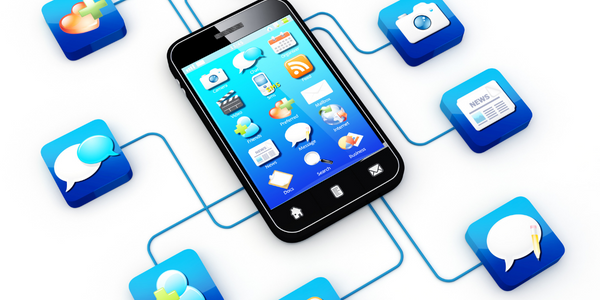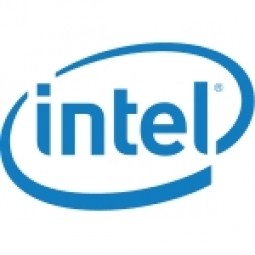Huawei
建设一个更美好的互联世界。
概述
公司介绍
华为是全球ICT解决方案的领导者。华为在企业领域的战略侧重于与合作伙伴的紧密合作与融合,基于对客户需求的深刻理解,提供广泛的、以客户为中心的高效ICT解决方案和服务。根据他们的产品组合,涵盖企业网络、统一通信与协作 (UC&C)、云计算和数据中心、企业无线、网络能源和基础设施服务。
物联网解决方案
主要客户
加拿大贝尔、LG、挪威电信
子公司
物联网应用简介
Huawei 是基础设施即服务 (iaas), 平台即服务 (paas), 应用基础设施与中间件, 分析与建模, 网络安全和隐私, 网络与连接, 处理器与边缘智能, 传感器, 和 功能应用等工业物联网科技方面的供应商。同时致力于汽车, 城市与自治市, 电网, 电子产品, 设备与机械, 医疗保健和医院, 石油和天然气, 药品, 电信, 和 运输等行业。
技术
用例
功能区
行业
服务
技术栈
Huawei的技术栈描绘了Huawei在基础设施即服务 (iaas), 平台即服务 (paas), 应用基础设施与中间件, 分析与建模, 网络安全和隐私, 网络与连接, 处理器与边缘智能, 传感器, 和 功能应用等物联网技术方面的实践。
-
设备层
-
边缘层
-
云层
-
应用层
-
配套技术
技术能力:
无
弱
中等
强

Supplier missing?
Start adding your own!
Register with your work email and create a new supplier profile for your business.
实例探究.

Case Study
New Backup System Solves Legacy Problems
Midea's outdated IT infrastructure in some sites could no longer keep pace with company's growth, putting operational reliability at risk. The legacy data backup system could not backup at some production sites. Some sites were still using the x86 server’s local hard disks as the backup media, resulting in limited backup size. The existing backup system was inefficient.

Case Study
Carmaker Holds the Keys to Network Security
FAW-Volkswagen Automotive Company (FAW-VW) required a high number of communication terminals due to its rapid development. FAW-VW also faced challenges in security management, IT Operation and Maintenance (O&M) costs, and employees work efficiency. FAW-VW needed terminal security protection with reliable access control and user rights management and comprehensive network protection.

Case Study
NB-IoT Boosts Smart Bike Sharing
Ofo Bike sharing company wanted to improve its user experience by providing seamless network connectivity to its users where they can locate bikes and pedal away quickly exactly when and where they need one, but challenge is to avoid frustration if user finds difficulties in finding bikes, unlocking the bikes and making payments
.png)
Case Study
New smart in-car features with Connected Vehicle Modular Platform (CVMP)
Despite keeping overseas Eurasia and Latin America growth on track as shown in Q4 2017 results, PSA group was faced with an internal R&D dilemma at its subsidiary Opel whilst its sales in China have dropped by almost half, to 387,000, all in the same year. Seeing that the Chinese passenger-car market on the other hand has surged nearly a quarter, from 19.7 million in 2014 to 24.7 million in 2017, PSA group saw the need to create increasingly connected vehicles to attract consumers with a strong appetite for 5G. The main challenge remains that PSA's product lineup still has overlapping and outdated models, including an earlier version of the Peugeot 3008 and several Citroen and DS models, all of which are sold only in China.

Case Study
Smart Liaoyuan: The First Smart City in Northeast China
• Liaoyuan's demands for building a high-quality smart city, covering multiple sectors, including city management, emergency command, public security, and health care. • Unable to connect different functional sectors for lack of a unified information system; without IoT, city management is restricted to manual intervention.

Case Study
Drug Maker Takes the Right Prescription
China Pharm decided to build a cloud-based platform to support the requirements of IT planning for the next five to ten years which includes a dynamic and scalable mail resource pool platform. The platform needed to have the following functions: all nodes support redundancy, ensuring service continuity and good user experience, simple and easy-to-use user interfaces for end users and administrators and good compatibility and supports smooth capacity expansion.

Case Study
Karamay: Building the Safest City
• The non-smart legacy surveillance platform lacks video processing capability, resulting in unclear images and low work efficiency • The existing information systems are isolated, making it difficult to centrally manage video surveillance products and achieve multi-platform interconnection and collaboration. As a result, intelligent analysis of massive data and effective data mining are impeded.

Case Study
Longyan Smart Hospital: Secure, Efficient and Green
• Aiming to be the model hospital in Fujian province, Longyan People Hospital plans to build a "digital hospital" in its new building, providing mobile ward rounds, desktop cloud, and Hospital Information System (HIS) cloud, as well as service level disaster recovery with the old building • Need to migrate the existing applications, such as HIS, Laboratory Information System (LIS), Picture Archiving and Communication System (PACS), and resident health system, to the new building to achieve desktop cloud

Case Study
Going Mobile: Business on the Go
Haier is building a mobile application platform where all mobile applications running on this platform must be designed with unified security, architecture, management, and platform support capabilities. This new platform also must incorporate Haier's IT applications with smart devices.

Case Study
Unified Quality Inspection Standards for Brand Owners and Multiple Factories
In the 3C industry and the automotive industry, the consistency of the measurement standards of upstream parts processing manufacturers and OEMs is important. How to quickly and efficiently sample the quality of parts according to the standards after OEM manufacturers receive parts, digitize the test results in real-time and share with other business systems and make them traceable, are common pain points in the industry.

Case Study
Error Proofing Inspection after Product Assembly
In the assembly workshop of an automobile OEM, the last process of automobile production still needs to rely on a lot of manpower to assemble the body. For the scene of lamp inspection, due to the mixed production inspection, the inspectors completely rely on experience to inspect the model. In addition, due to the serious light interference on the assembly line, the inspectors also need to avoid the interference of external light sources on the detection of vehicle lights, and the detection cycle is short, which also has high requirements on the inspection speed of the inspectors.At present, traditional manual quality inspection faces the problems of quality, special scene response and information integration:1 Quality: In manual quality inspection, experienced quality inspectors are required to know exactly which parts are equipped with which models based on 20+ types of vehicles. The requirements for human experience are high, and new employees are unfamiliar with models. There will be problems with missed inspections.2 In the case of a strong light source for a long time, it is necessary to take relevant human protection to prevent the eyes from being exposed to the light source for a long time.3 Information integration: at present, it is impossible to match the material of the model and the lamp, and the material deviation cannot be traced.

Case Study
3C Product Online Appearance Quality Inspection
For a 3C product supply chain enterprise, the monthly labour cost of manual visual inspection exceeds 2 million, the proportion of quality inspection personnel accounts for 20%~40%, and there are quality problems such as missed inspections. At present, manual quality inspection is faced with the problems of quality, cost, response to special scenarios, and information integration. The details are as follows:Quality: The subjective factor of manual quality inspection has a great influence on the judgment result, and there will be a problem of missed inspection based on visual fatigue; Production status of a 3C product supply chain enterprise.Information integration: There is no effective accumulation and utilization of production data, and subsequent process reengineering and quality analysis cannot be promoted, and the adaptation to automated production processes is weak.Cost: The turnover of personnel is high, resulting in high training and labour costs, and it is difficult to recruit workers.Efficiency: Traditional machine vision uses programmed computing logic for visual inspection, which has poor anti-interference ability for such complex surface inspection, high false detection, and heavy workload for personnel re-judgment.

Case Study
5G+AI: Production Process Bottleneck Analysis
In the product assembly operation involving people in the factory production line, the general actions usually include fixed operation procedures such as: reaching out, grasping, moving objects, assembling. After the operator works for a long time or is disturbed, the assembly action will be omitted and it might cause misoperation. It's also necessary to identify the problems existing in the action through action analysis so that the sequence and method of the action can be improved.

Case Study
5G+AI: Intelligent Sorting of Items in the Production Process
In many industries such as industrial manufacturing and logistics, there are many needs for identifying, detecting and classifying products or objects. Traditional detection methods based on artificial vision are prone to fatigue, and cannot always guarantee high detection efficiency, and due to the physiological limit of the human eye itself, it is difficult to achieve high standards in terms of speed and accuracy. Therefore, the traditional manual detection method restricts the development and improvement of the productivity level and has been difficult to meet the needs of production. More and more sorting robots based on machine vision are widely used in various industrial production lines. That is, the target image information is obtained through the industrial camera, and the sorting of the grabbed target is completed. The traditional industrial robot visual sorting system uses classical computer vision theory, such as invariant distance, template matching, SURF feature and other algorithms to identify and locate workpieces, which has higher requirements on the scene environment, workpiece shape and background colour. The workpieces and objects on the on-site conveyor belt may have complex shapes and different postures and are densely placed together. In this case, the classical visual recognition and positioning algorithms cannot meet the requirements of high recognition rate and high precision.
同类供应商.

Supplier
Cisco
Cisco designs and sells broad lines of products, provides services, and delivers integrated solutions to develop and connect networks around the world, building the Internet. Over the last 30 plus years, they have been the world’s leader in connecting people, things, and technologies - to each other and to the Internet - realizing their vision of changing the way the world works, lives, plays, and learns.Today, Cisco has over 70,000 employees in over 400 offices worldwide who design, produce, sell, and deliver integrated products, services, and solutions. Over time, they have expanded to new markets that are a natural extension of their core networking business, as the network has become the platform for automating, orchestrating, integrating, and delivering an ever-increasing array of information technology (IT)–based products and services.Subsidiaries/ Business Units: - Jasper - OpenDNS - CloudLock

Supplier
Advantech
Founded in 1983, Advantech is a leader in providing trusted innovative embedded and automation products and solutions. Advantech offers comprehensive system integration, hardware, software, customer-centric design services, and global logistics support; all backed by industry-leading front and back office e-business solutions.

Supplier
IBM
IBM is an American multinational technology and consulting corporation that manufactures and markets computer hardware, middleware, and software, and offers infrastructure, hosting, and consulting services in areas ranging from mainframe computers to nanotechnology. IBM is intent on leading the development of a global data field.

Supplier
Microsoft
Microsoft develops, manufactures, licenses, supports and sells computer software, consumer electronics and personal computers and services. Its best known software products are the Microsoft Windows line of operating systems, Microsoft Office office suite, and Internet Explorer and Edge web browsers.Year Founded: 1975Revenue: $93.6 billion (2014)NASDAQ: MSFT
合作伙伴.

Supplier
Intel
Intel designs, manufactures, and sells integrated digital technology platforms worldwide. The company's platforms are used in various computing applications comprising notebooks, desktops, servers, tablets, smartphones, wireless and wired connectivity products, Wearables, transportation systems, and retail devices. It offers microprocessors that processes system data and controls other devices in the system; chipsets, which send data between the microprocessor and input, display, and storage devices, such as keyboard, mouse, monitor, hard drive or solid-state drive, and optical disc drives; system-on-chip products that integrate its central processing units with other system components onto a single chip; and wired network connectivity products.Featured Subsidiaries/ Business Units:- Intel Inside- Intel Data Center Manager (DCM)- Saffron Technology- Wind River

Supplier
IBM
IBM is an American multinational technology and consulting corporation that manufactures and markets computer hardware, middleware, and software, and offers infrastructure, hosting, and consulting services in areas ranging from mainframe computers to nanotechnology. IBM is intent on leading the development of a global data field.

Supplier
Siemens
Siemens is the largest engineering company in Europe. With their positioning along the electrification value chain, Siemens has the knowhow that extends from power generation to power transmission, power distribution and smart grid to the efficient application of electrical energy. Featured Subsidiaries/ Business Units: - Digital Factory - Siemens Technology to Business (TTB)
---nyse--ge_1.jpg)
Supplier
General Electric
GE is a diversified specialty equipment, infrastructure and financial services company. Their products and services range from aircraft engines, power generation, oil and gas production equipment, and household appliances to medical imaging, business and consumer financing and industrial products. GE believes new technologies will merges big iron with big data to create brilliant machines. This convergence of machine and intelligent data is known as the Industrial Internet, and it's changing the way we work. Year founded: 1892 Revenue: $148.5 billion (2014) NYSE: GE Featured Subsidiaries/ Business Units: - GE Digital - GE Predix - GE Intelligent Platform - Wurldtech

Supplier
Vodafone
Vodafone is a British multinational telecommunications company, has its headquarters in London and with its registered office in Newbury, Berkshire.Among mobile operator groups globally, Vodafone ranked fifth by revenue and second (behind China Mobile) in the number of connections (435.9 million) as of 2014.

Supplier
Microsoft
Microsoft develops, manufactures, licenses, supports and sells computer software, consumer electronics and personal computers and services. Its best known software products are the Microsoft Windows line of operating systems, Microsoft Office office suite, and Internet Explorer and Edge web browsers.Year Founded: 1975Revenue: $93.6 billion (2014)NASDAQ: MSFT

Supplier
Oracle
Oracle is a leader in enterprise software and provides hardware and services to help companies improve their processes. Best known for its focus on databases, it offers aid in areas such as managing business data, collaboration and application development, customer relationship management, and supply chain management. Year founded; 1977 Revenue: $38.2 billion (2015) NYSE: ORCL









